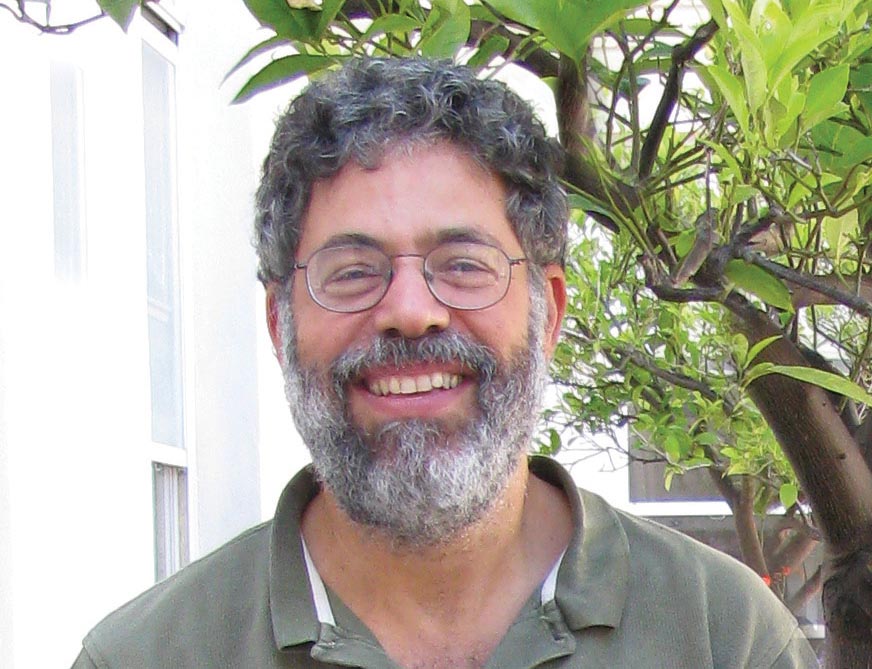Ph.D. Massachusetts Institute of Technology, 1985. Joined Berkeley faculty in 1988. Awards: Hertz Foundation Fellowship, American Physical Society Simon Ramo Thesis Prize, Hertz Foundation Thesis Prize, NSF Presidential Young Investigator Award, ONR Young Investigator Award, Sloan Fellowship, Fellow of the American Physical Society.
Research Interests
Although most of the universe is in the plasma state, the basic properties of plasmas are not well understood. Plasmas are collective systems, and exhibit remarkably complicated nonlinear behaviors like turbulence and chaos. Better understanding of basic plasma physics should help us in areas as diverse as astrophysics and plasma processing.
My group studies an unusual type of plasma—non-neutral plasmas. Such plasmas consist of particles of only one sign of charge: typically electrons, ions, positrons, or antiprotons. Since non-neutral plasmas are extraordinarily stable, readily controllable, and easily diagnosed, they are ideal for many basic plasma physics experiments. In addition, non-neutral plasmas can be used for experiments on fluid dynamics, nonlinear dynamics and antihydrogen formation. As non-neutral plasmas are confined in small scale traps, experiments are run by one or two people.
Current Projects
Currently our research is focused on three problems:
Antihydrogen formation: One of the most exciting recent physics accomplishments was the production of antihydrogen at CERN. The antihydrogen was synthesized from positron and antiproton plasmas quite similar to the electron plasmas that we make in our lab. Ultimately, researchers intend to look for CPT violations by comparing the spectra of hydrogen and antihydrogen, and, possibly, anomalous gravitational effects on antimatter. However the researchers at CERN were only able to create antihydrogen, not trap it, and the most interesting physics can only be done on trapped antihydrogen. We have joined a new group, ALPHA whose goal is to trap antihydrogen, and are currently running tests at Berkeley on trapping schemes.
- BGK waves: Recently we discovered a method of generating very large, very high Q structures in our plasmas. These structures are related to BGK waves. BGK wave theory underpins much of the theory of nonlinear waves in plasmas, but have rarely been observed, and never with such high Q or high amplitude. They are related to the structures seen in space plasmas and in laser-plasma interactions. We have been studying the details of these waves, particularly their harmonic content, lifetime, and excitation method.
- Autoresonance: Autoresonance is a powerful, very general technique for exciting nonlinear oscillators. We study this technique in experiments using our plasmas, analytic theory, and numerical simulations.
Publications
J. Fajans, E. Gilson, and L. Friedland, “Autoresonant (nonstationary) excitation of the diocotron mode in non-neutral plasmas,” Phys. Rev. Lett. 82:4444 (1999).
D. Durkin and J. Fajans, “Experimental dynamics of a vortex within a vortex,” Phys. Rev. Lett. 85:052 (2000).
E. Gilson and J. Fajans, “Quadrupole induced resonant particle transport in a pure-electron plasma,” Phys. Rev. Lett., 90: 015001, (2003).
W. Bertsche, J. Fajans and L. “Friedland,Direct Excitation of High-Amplitude Chirped Bucket-BGK Modes,” Phys. Rev. Lett., 91: 265003, (2003).
E. Sarid, C. Teodorescu, P.S. Marcus, and J. Fajans, “Breaking of Rotational Symmetry in Cylindrically Bounded 2D Electron Plasmas and 2D Fluids,” Phys. Rev. Lett., 93:215002, (2004).
J. Fajans and A. Schmidt, “Malmberg-Penning and Minimum-B Trap compatibility: the advantages of higher-order multipole traps”, NIM A521:318, (2004).
J. Fajans, W. Bertsche, K. Burke, S.F. Chapman, and D.P. van der Werf, "The effects of extreme magnetic quadrupole fields on Penning traps, and the consequences for anti-hydrogen trapping," in press PRL (2005).

